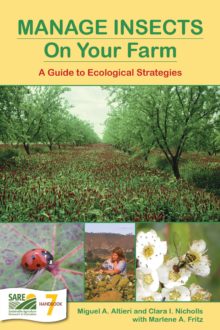Parasitoids
Most parasitoids — parasitic insects that kill their hosts — live freely and independently as adults; they are lethal and dependent only in their immature stages. Parasitoids can be specialists, targeting either a single host species or several related species, or they can be generalists, attacking many types of hosts. Typically, they attack hosts larger than themselves, eating most or all of their hosts’ bodies before pupating inside or outside them.
When the parasitoid emerges from its pupa as an adult, it usually nourishes itself on honeydew, nectar or pollen — although some adults make meals of their host’s body fluids and others require additional water. Adult female parasitoids quickly seek out more victims in which to lay their host-killing eggs. With their uncanny ability to locate even sparsely populated hosts using chemical cues, parasitoid adults are much more efficient than predators at ferreting out their quarry.
Different parasitoids can victimize different life stages of the same host, although specific parasitoids usually limit themselves to one stage. Thus, parasitoids are classified as egg parasitoids, larval (nymphal) parasitoids or adult parasitoids. Some parasitoids lay their eggs in one life stage of a victim but emerge at a later life stage. Parasitoids are also classified as either ectoparasites or endoparasites depending, respectively, on whether they feed externally on their hosts or develop inside them. Their life cycle is commonly short, ranging from 10 days to four weeks.
